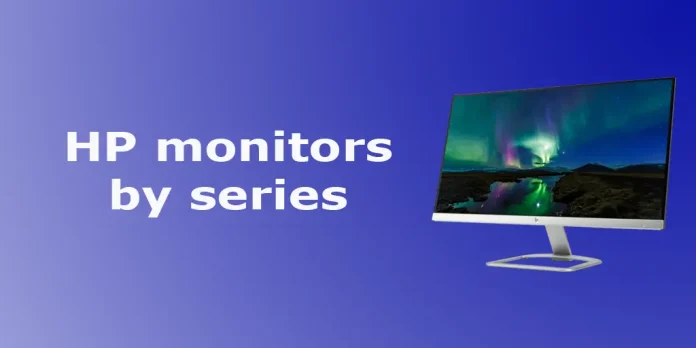HP monitors are the result of a collaboration between HP Inc. and a consortium of the world’s leading electronics manufacturers. You should know that the HP division responsible for consumer products has almost completely switched to outsourced production. Therefore, HP does not develop both the design and technical side of its monitors, but uses ready-made solutions developed in the laboratories of OEM manufacturers.
Partner Manufacturers of HP Monitors
- Hon Hai Precision Industry Co. (Foxconn), a Taiwanese multinational electronics contract manufacturer, is one of the major companies involved in the assembly of HP monitors. Foxconn’s broad manufacturing capabilities and extensive experience in electronics manufacturing make it a key player in the production process.
- Qisda Corporation, another key participant, specializes in the design and manufacture of monitors. Qisda manufactures a small proportion of HP’s monitors.
- TPV Technology Limited, a large monitor and TV manufacturer that owns the Philips brand, produces some monitors for HP.
- Wistron Corporation, a full-service design and manufacturing company, contributes to HP monitors.
Panel Suppliers for HP Monitors
The quality of HP monitors is not bad because the display panels are supplied by industry-leading suppliers:
- BOE Technology Group Co, Ltd, one of the world’s largest LCD, OLED and flexible display manufacturers, provides high-quality panels.
- AU Optronics Corporation (AUO), known for its displays, contributes to HP monitors by providing high-resolution panels.
LG Display Co., Ltd., which owns display factories for both monitors and TVs, provides panels using IPS technology.
HP Monitor Series
HP offers several series of monitors, from home to professional. Each series has special features to meet the needs of consumers, professionals, gamers, and creative individuals. You should know that the positioning of the monitor series is entirely arbitrary, as a monitor for business is undoubtedly suitable for the home.
Below is an overview of some of HP’s most popular monitor series:
- HP Essential Series: Home and office users need affordable and reliable monitors for everyday use: basic connectivity, standard resolution, and energy-efficient design.
- HP EliteDisplay Series: Business professionals want high-quality monitors with advanced connectivity and ergonomics. Adjustable stand, built-in privacy screen, and multiple connectivity options ensure seamless integration into professional environments.
- HP ProDisplay Series: SMB and enterprise customers who need reliable monitors for a comfortable work environment. Key features focus on comfort and a variety of connectivity options.
- HP Z Display Series: The monitor for professionals and creative professionals who demand the highest color accuracy and performance. High resolution, factory-calibrated color accuracy, and a wide color gamut meet the needs of photographers, video editors, and designers.
- HP Omen Series: Gamers looking for high-performance monitors with high refresh rates and fast response times. High refresh rates (up to 240Hz or more), low response times, NVIDIA G-SYNC or AMD FreeSync technology, and gaming-centric design.
- HP Envy Series: High-resolution displays, a wide range of colors, and an aesthetic design with thin bezels.
- HP E Series: Standard monitors for work and home.
- HP P-Series: HP P-Series monitors are designed primarily for professionals and businesses and are suitable for a wide range of office applications. HP P-Series monitors range in resolution from Full HD (1920 x 1080) to QHD (2560 x 1440). The monitors are height adjustable and can tilt and swivel.
Monitors can be grouped into many lines or series, with a single monitor falling into multiple categories. For example, HP now divides its monitors by purpose, such as Premium, Mainstream, Everyday, Conferencing, Creative, and Gaming. But monitors are best categorized by class and technical capabilities, resolution, and the quality of the display
HP monitor display resolution
Let’s take a look at what HP monitors are by screen resolution and what resolutions are available. The resolution used depends on the matrix of the display and more specifically on the factory and production line where the displays for the monitors are made.
- The resolutions used for HP monitors are:
- 4K UHD (Ultra High Definition) – 3840 x 2160: Provides extremely detailed images suitable for professional creative work, high-end gaming, and viewing 4K content; this resolution has recently become the standard for televisions. It is used in HP monitors, but not widely.
- FHD (Full High Definition) – 1920 x 1080: The standard resolution for many monitors, providing good detail that such monitors produce the most, especially with a small screen diagonal.
- QHD (Quad High Definition) – 2560 x 1440: Offers more screen real estate and detail than FHD, ideal for professional applications, gaming, and detailed work. This is HP’s second most popular monitor model, and the aspect ratio of these monitors is typically 16×9, although a 16×10 resolution model is less common.
- WQHD (Wide Quad High Definition) – 3440 x 1440: These are monitors that emphasize the widescreen aspect; they are wider and have a 21:9 aspect ratio and a screen size of over 30 inches.
- WUHD (Wide Ultra High Definition) – 5120 x 2160: These are wide UHD monitors with a 21×9 aspect ratio.
- DQHD (Dual Quad High Definition) – 5120 x 1440 is an extra wide monitor. DQHD monitors are almost never produced as it is inferior to WUHD in terms of vertical pixel count.
- WUXGA (Widescreen Ultra Extended Graphics Array) – 1920 x 1200: A slightly higher resolution than FHD and more vertical space, these monitors are few in number as they have no clear advantages.
- Unused resolutions for HP monitors include:
- HD (High Definition) – 1280 x 720: Obsolete resolution, HP no longer orders these monitors.
- UWQHD (Ultra-Wide Quad High Definition) – 3440 x 1440: WQHD format, but Ultra is used in wide monitors with increased width. HP no longer manufactures these monitors.
- UW4K (Ultra-Wide 4K) – 3840 x 1600: This display format also exists, but HP does not use it either.
Frame rate of HP monitors
The frame rate of HP monitors, often expressed in hertz (Hz), varies between models and series. The frame rate indicates how many times per second the monitor can refresh the image on the screen. Usually, a maximum value is specified. Here’s how you can categorize monitors based on frequency.
- Basic computer and office monitors: Typical range: 60 – 75 Hz
Suitable for everyday tasks such as web browsing, document editing, video streaming, and everyday use. Monitors in this range provide standard performance for most office and home computing tasks. - Enhanced monitors: Typical range: 120 Hz. Some professional-grade monitors may have higher refresh rates of up to 120 Hz for smoother motion clarity, which can be helpful for dynamic content creation and video work. These monitors are also more pleasant to work with and less tiring to the eyes.
- Gaming and professional monitors: Typical range: 144-240 Hz, up to 360 Hz in some models. High refresh rates are important in gaming, especially in fast-paced genres where motion clarity and responsiveness are essential. HP gaming-oriented monitors, notably the OMEN series, have higher refresh rates.
Generally, there is a straightforward rule: the higher the monitor’s refresh rate, the better it is to show a better image. But pay attention to marketing tricks; for example, the monitor may be at 24 Hz. But if you read the technical description, this frequency can be supported only at the minimum resolution of the image.






